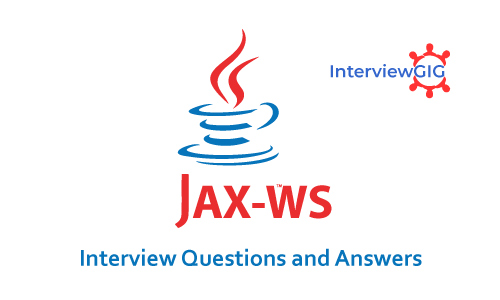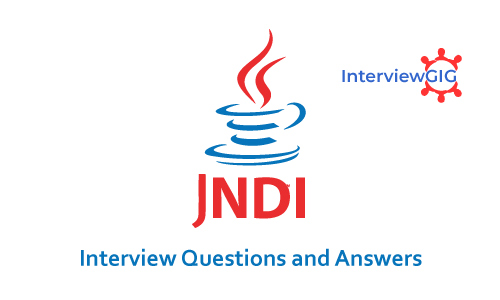What is multithreading?
Multithreading is a process of executing multiple threads simultaneously.
Its main advantage is:
- Threads share the same address space.
- Thread is lightweight.
- Cost of communication between process is low
What is thread?
A thread is a lightweight sub-process. It is a separate path of execution. It is called separate path of execution because each thread runs in a separate stack frame.
How can we create a Thread in Java?
There are two ways to create Thread in Java – first by implementing Runnable interface and then creating a Thread object from it and second is to extend the Thread Class.
What is difference between user Thread and daemon Thread?
When we create a Thread in java program, it’s known as user thread. A daemon thread runs in background and doesn’t prevent JVM from terminating. When there are no user threads running, JVM shutdown the program and quits. A child thread created from daemon thread is also a daemon thread.
What is context-switching in multi-threading?
Context Switching is the process of storing and restoring of CPU state so that Thread execution can be resumed from the same point at a later point of time. Context Switching is the essential feature for multitasking operating system and support for multi-threaded environment.
What are the benefits of multi-threaded programming?
In Multi-Threaded programming, multiple threads are executing concurrently that improves the performance because CPU is not idle in case some thread is waiting to get some resources. Multiple threads share the heap memory, so it’s good to create multiple threads to execute some task rather than creating multiple processes. For example, Servlets are better in performance than CGI because Servlet support multi-threading but CGI doesn’t.
What are different states in life cycle of Thread?
When we create a Thread in java program, its state is New. Then we start the thread that changes its state to Runnable. Thread Scheduler is responsible to allocate CPU to threads in Runnable thread pool and change their state to Running. Other Thread states are Waiting, Blocked and Dead.
What is the difference between Process and Thread?
A process is a self-contained execution environment and it can be seen as a program or application whereas Thread is a single task of execution within the process. Java runtime environment runs as a single process which contains different classes and programs as processes. Thread can be called lightweight process. Thread requires fewer resources to create and exists in the process, thread shares the process resources.
What is the difference between preemptive scheduling and time slicing?
Under preemptive scheduling, the highest priority task executes until it enters the waiting or dead states or a higher priority task comes into existence. Under time slicing, a task executes for a predefined slice of time and then reenters the pool of ready tasks. The scheduler then determines which task should execute next, based on priority and other factors.
Is it possible to start a thread twice?
No, there is no possibility to start a thread twice. If we do, it throws an exception.
Can we call the run() method instead of start()?
Yes, but it will not work as a thread rather it will work as a normal object so there will not be context-switching between the threads.
How can we pause the execution of a Thread for specific time?
We can use Thread class sleep () method to pause the execution of Thread for certain time. Note that this will not stop the processing of thread for specific time, once the thread awake from sleep, it’s state gets changed to runnable and based on thread scheduling, it gets executed.
What is Thread Scheduler and Time Slicing?
Thread Scheduler is the Operating System service that allocates the CPU time to the available runnable threads. Once we create and start a thread, it’s execution depends on the implementation of Thread Scheduler.
Time Slicing is the process to divide the available CPU time to the available runnable threads. Allocation of CPU time to threads can be based on thread priority or the thread waiting for longer time will get more priority in getting CPU time. Thread scheduling can’t be controlled by java, so it’s always better to control it from application itself.
How does thread communicate with each other?
When threads share resources, communication between Threads is important to coordinate their efforts. Object class wait(), notify() and notifyAll() methods allows threads to communicate about the lock status of a resource.
How can we achieve thread safety in Java?
There are several ways to achieve thread safety in java – synchronization, atomic concurrent classes, implementing concurrent Lock interface, using volatile keyword, using immutable classes and Thread safe classes.
How to create daemon thread in Java?
Thread class setDaemon(true) can be used to create daemon thread in java. We need to call this method before calling start() method else it will throw IllegalThreadStateException.
What is ThreadLocal?
Java ThreadLocal is used to create thread-local variables. We know that all threads of an Object share it’s variables, so if the variable is not thread safe, we can use synchronization but if we want to avoid synchronization, we can use ThreadLocal variables.
Every thread has it’s own ThreadLocal variable and they can use it’s get() and set() methods to get the default value or change it’s value local to Thread. ThreadLocal instances are typically private static fields in classes that wish to associate state with a thread.
What is Java Thread Dump, How can we get Java Thread dump of a Program?
Thread dump is list of all the threads active in the JVM, thread dumps are very helpful in analyzing bottlenecks in the application and analyzing deadlock situations. There are many ways using which we can generate Thread dump – Using Profiler, Kill -3 command, jstack tool etc. I prefer jstack tool to generate thread dump of a program because it’s easy to use and comes with JDK installation. Since it’s a terminal based tool, we can create script to generate thread dump at regular intervals to analyze it later on.
What is Thread Pool? How can we create Thread Pool in Java?
A thread pool manages the pool of worker threads; it contains a queue that keeps tasks waiting to get executed.
A thread pool manages the collection of Runnable threads and worker threads execute Runnable from the queue.
java.util.concurrent.Executors provide implementation of java.util.concurrent.Executor interface to create the thread pool in java. Thread Pool Example program shows how to create and use Thread Pool in java. Or read ScheduledThreadPoolExecutor Example to know how to schedule tasks after certain delay.
What is synchronization?
Synchronization is the capability of control the access of multiple threads to any shared resource. It is used:
- To prevent thread interference.
- To prevent consistency problem.
What is the purpose of Synchronized block?
- Synchronized block is used to lock an object for any shared resource.
- Scope of synchronized block is smaller than the method.
What is static synchronization?
If you make any static method as synchronized, the lock will be on the class not on object.





